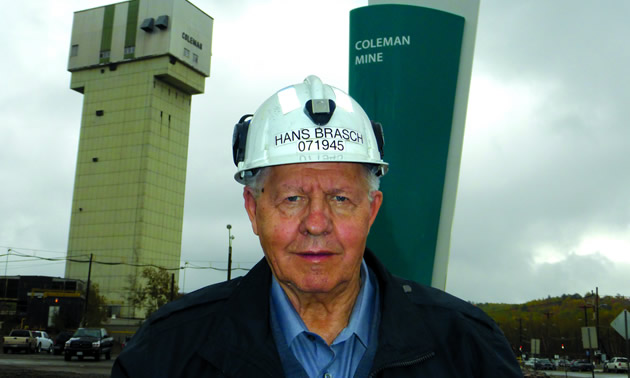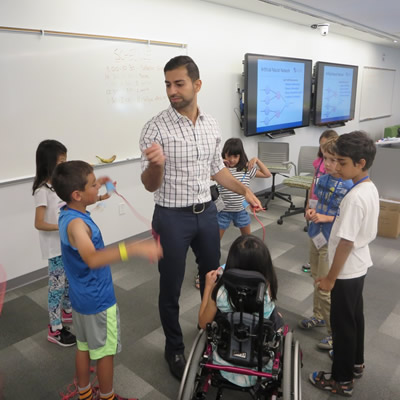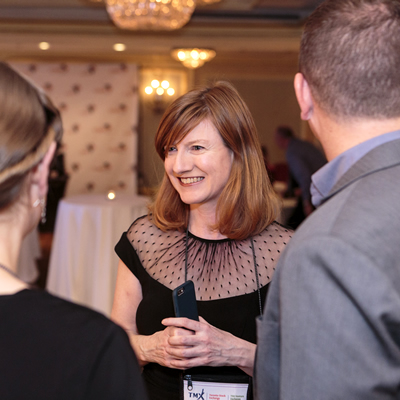Hans Brasch’s lucky life
Retired miner Hans Brasch shares his stories of the mining industry with the next generation at Dynamic Earth in Ontario.

Hans Brasch worked in the mining industry for 40 years, and never missed a single day of work. — Photo: Hans Brasch
“I worked 40 years in the mines,” said Hans Brasch, a now retired Sudbury area miner. “The record shows that I never missed a day of work. I can prove that.” Brasch started working in the mining industry in 1952, and did not retire until 1992. Despite dangerous dances with dynamite, he never did miss a single day of work. Now, he’s returned to the job at Dynamic Earth, an interactive science museum owned and operated by Science North in Sudbury, Ontario.
It’s common knowledge these days that mining was tough work in the beginning. It’s one feat to go underground for work every day, but it’s another to accept the extra risk involved. “You had to get used to it,” said Brasch about his work in the mines. “It took me a week or two to adjust.” But in time, going underground became normal.
After retiring, it didn’t take Brasch long to return to work, but this time it was volunteering at Dynamic Earth. “It took me about six months, then I thought I have to do something,” Brasch said. “I was over 60. Now I’m 85—you can write that down!” His work includes tours, helping organize demonstrations for the public, and talking to young visitors who are interested in careers in science and mining.
In his retirement, Brasch has also authored a handful of books about mining. While these books are unfortunately only for his previous company and co-workers, they recount stories of his time spent in the mines. Between his books and his work at Dynamic Earth, Brasch passes on his knowledge of the industry to younger generations.
Dancing with dynamite
Modern mining looks a lot different than the “old-fashioned” mining Brasch dedicated his career to. “In my time, you shovelled,” he said, “You shovelled a lot of ore down in the patch.” In the early years of mining, each worker was trained in a range of positions as well. “You have to have a lot of qualifications as a miner. You need to know a lot of things,” Brasch said. Miners needed to know how to blast dynamite properly, recover materials efficiently and maintain their workspace.
In his work at Dynamic Earth, Brasch is often questioned about the regular use of dynamite in the old days. “I explain to them that I almost killed myself three times,” he said. “I was lucky and got away scot-free.”
Brasch described his run-ins with danger in the mines. The first time, there was a cave-in. The second involved dynamite and a rock exploding into his chin: “I could see Tweety Bird from Hollywood,” he joked. “Things were different,” he said. “They brought a doctor. He put seven stitches in and said ‘OK, back to work.’” The third time Brasch said, “I should have been crushed, but I escaped that too!” The miners of Brasch’s time, however, thought of the positive every day they went to work, and relied on each other. “You worked together as a team.”
Despite these dangerous days underground, Brasch never missed a day of work. “When I retired they gave me a certificate saying that I never missed a shift,” he said. This recognition is one of the proudest moments of his career. It shows his dedication to his work—and his luck over his 40 years underground. “I was very lucky in my life. I call it luck.”
The lifestyle around mining also looked a lot different. “In the early days, you lived in a company house. I paid $9 for rent each month, and hydro was about $2.50 each month.” In the 1970s, the industry started to turn towards modern methods of mining, so Brasch moved his family out of the company home and into their own home.
Stories of the underground
Brasch loves the time he spends at Dynamic Earth passing his stories and knowledge on to the next generation of potential miners. “At Dynamic Earth, we have really good replicas to show the kids how it was done,” he said. Part of the experience at Dynamic Earth includes tours into the underground mine. “We have an old machine from 1883 underground,” he said. Brasch helps Dynamic Earth set up the presentations and tours that include the underground mine and its machinery.
Brasch loves to get the kids engaged in his presentations. “I bring each child an ore or nickel sample,” he said. “I tell them that there’s 13 different elements in there including gold and silver. When they hear gold every kid asks how to get it out. They’re very happy!” He finds that when the kids are excited, they really listen to the information he shares.




